一、论文理论

论文地址:Densely Connected Convolutional Networks
1.理论思想
DenseNet最大化前后层信息交流,通过建立前面所有层与后面层的密集连接,实现了特征在通道维度上的复用,不但减缓了梯度消失的现象,也使其可以在参数与计算量更少的情况下实现比ResNet更优的性能。
2.创新点
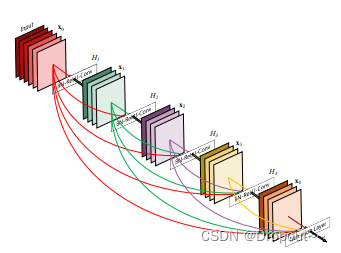

操作过程:
- 每一个Bottleneck输出的特征通道数是相同的,例如这里的K=32。同时可以看到,经过concat操作后的通道数是按K的增长量增加的,因此这个K也被称为GrowthRate。
- 这里1×1卷积的作用是固定输出通道数,达到降维的作用,1×1卷积输出的通道数通常是GrowthRate的4倍。当几十个Bottleneck相连接时,concat后的通道数会增加到上千,如果不增加1×1的卷积来降维,后续3×3卷积所需的参数量会急剧增加。比如,输入通道数64,增长率K=32,经过15个Bottleneck,通道数输出为64+15*32=544,再经过第16个Bottleneck时,如果不使用1×1卷积,第16个Bottleneck层参数量是3*3*544*32=156672,如果使用1×1卷积,第16个Bottleneck层参数量是1*1*544*128+3*3*128*32=106496,可以看到参数量大大降低。
- Dense Block采用了激活函数在前、卷积层在后的顺序,即BN-ReLU-Conv的顺序,这种方式也被称为pre-activation。通常的模型relu等激活函数处于卷积conv、批归一化batchnorm之后,即Conv-BN-ReLU,也被称为post-activation。作者证明,如果采用post-activation设计,性能会变差。想要更清晰的了解pre-activition,可以参考我的博客ResNet残差网络及变体详解中的Pre Activation ResNet。
二、代码部署
1.代码
import torch
import torch.nn as nn
import torch.nn.functional as F
import torch.utils.checkpoint as cp
from torch.jit.annotations import List
from timm.models.layers import BatchNormAct2d
def autopad(k, p=None): # kernel, padding
# Pad to 'same'
if p is None:
p = k // 2 if isinstance(k, int) else [x // 2 for x in k] # auto-pad
return p
class Conv(nn.Module):
# Standard convolution iscyy
def __init__(self, c1, c2, k=1, s=1, p=None, g=1, act=True): # ch_in, ch_out, kernel, stride, padding, groups
super().__init__()
self.conv = nn.Conv2d(c1, c2, k, s, autopad(k, p), groups=g, bias=False)
self.bn = nn.BatchNorm2d(c2)
self.act = nn.SiLU() if act is True else (act if isinstance(act, nn.Module) else nn.Identity())
def forward(self, x):
return self.act(self.bn(self.conv(x)))
def forward_fuse(self, x):
return self.act(self.conv(x))
class DenseLayer(nn.Module):
def __init__(
self, int_numss, gr, bs, norm_layer=BatchNormAct2d,
drop_rate=0., memory_efficient=False):
super(DenseLayer, self).__init__()
self.add_module('norm1', norm_layer(int_numss)),
self.add_module('conv1', nn.Conv2d(
int_numss, bs * gr, kernel_size=1, stride=1, bias=False)),
self.add_module('norm2', norm_layer(bs * gr)),
self.add_module('conv2', nn.Conv2d(
bs * gr, gr, kernel_size=3, stride=1, padding=1, bias=False)),
self.drop_rate = float(drop_rate)
self.memory_efficient = memory_efficient
def bottleneck_fn(self, xs):
concated_features = torch.cat(xs, 1)
bottleneck_output = self.conv1(self.norm1(concated_features)) # noqa: T484
return bottleneck_output
def any_requires_grad(self, x):
for tensor in x:
if tensor.requires_grad:
return True
return False
@torch.jit.unused # noqa: T484
def call_checkpoint_bottleneck(self, x):
def closure(*xs):
return self.bottleneck_fn(xs)
return cp.checkpoint(closure, *x)
@torch.jit._overload_method # mango noqa: F811
def forward(self, x):
pass
@torch.jit._overload_method # noqa: F811
def forward(self, x):
pass
def forward(self, x): # noqa: F811 iscyy/mango
if isinstance(x, torch.Tensor):
prev_features = [x]
else:
prev_features = x
if self.memory_efficient and self.any_requires_grad(prev_features):
if torch.jit.is_scripting():
raise Exception("Memory Efficient not supported in JIT")
bottleneck_output = self.call_checkpoint_bottleneck(prev_features)
else:
bottleneck_output = self.bottleneck_fn(prev_features)
new_features = self.conv2(self.norm2(bottleneck_output))
if self.drop_rate > 0:
new_features = F.dropout(new_features, p=self.drop_rate, training=self.training)
return new_features
class DenseBlock(nn.ModuleDict):
_version = 2
def __init__(
self, int_numss, gr, num_layers, bs=4, norm_layer=nn.ReLU,
drop_rate=0., memory_efficient=False):
super(DenseBlock, self).__init__()
for i in range(num_layers):
layer = DenseLayer(
int_numss + i * gr,
gr=gr,
bs=bs,
norm_layer=norm_layer,
drop_rate=drop_rate,
memory_efficient=memory_efficient,
)
self.add_module('denselayer%d' % (i + 1), layer)
def forward(self, init_features):
features = [init_features]
for name, layer in self.items():
new_features = layer(features)
features.append(new_features)
return torch.cat(features, 1)
class DenseTrans(nn.Sequential):
def __init__(self, int_numss, out_numss, kernel_size, norm_layer=nn.BatchNorm2d, aa_layer=None, act=True):
super(DenseTrans, self).__init__()
self.conv = nn.Conv2d(
int_numss, out_numss, kernel_size=kernel_size, stride=1)
self.bn = nn.BatchNorm2d(out_numss)
self.act = self.act = nn.SiLU() if act is True else (act if isinstance(act, nn.Module) else nn.Identity())
def forward(self, x):
return self.act(self.bn(self.conv(x)))
def forward_fuse(self, x):
return self.act(self.conv(x))
class DenseB(nn.Module):
def __init__(self, c1, c2, gr, num_layers=6):
super().__init__()
self.dense = DenseBlock(c1, gr, num_layers)
self.con = DenseTrans(c1 + gr * num_layers, c2, 1 ,1)
def forward(self, x):
x = self.con(self.dense(x))
return x
class DenseC(nn.Module):
def __init__(self, c1, c2, gr, num_layers=6):
super().__init__()
self.dense = DenseBlock(c1, gr, num_layers)
self.con = DenseTrans(c1 + gr * num_layers, c2, 1 ,1)
self.dense2 = DenseBlock(c1, gr, num_layers)
self.con2 = DenseTrans(c1 + gr * num_layers, c2, 1 ,1)
def forward(self, x):
x = self.con(self.dense(x))
x = self.con2(self.dense2(x))
return x
class DenseOne(nn.Module):
def __init__(self, c1, c2, n=1, gr=32, e=0.5):
super().__init__()
c_ = int(c2 * e)
self.cv1 = Conv(c1, c_, 1, 1)
self.cv2 = Conv(c1, c_, 1, 1)
self.cv3 = Conv(2 * c_, c2, 1)
self.m = nn.Sequential(*(DenseB(c_, c_, gr=gr, num_layers=6) for _ in range(n)))
def forward(self, x):
return self.cv3(torch.cat((self.m(self.cv1(x)), self.cv2(x)), dim=1))
class DenseOneC(nn.Module):
def __init__(self, c1, c2, n=1, gr=32, e=0.5):
super().__init__()
c_ = int(c2 * e)
self.cv1 = Conv(c1, c_, 1, 1)
self.cv2 = Conv(c1, c_, 1, 1)
self.cv3 = Conv(2 * c_, c2, 1)
self.m = nn.Sequential(*(DenseC(c_, c_, gr=gr, num_layers=6) for _ in range(n)))
def forward(self, x):
return self.cv3(torch.cat((self.m(self.cv1(x)), self.cv2(x)), dim=1))2.配置教程
(1)在models/cmmon.py中添加上述代码,将与初始代码中重复类删除
(2)在./models/yolo.py文件下里的parse_model函数,将类名加入进去
for i, (f, n, m, args) in enumerate(d['backbone'] + d['head']):内部
elif m in [DenseOne, DenseOneC]:
c1, c2 = ch[f], args[0]
if c2 != no: # if not output
c2 = make_divisible(c2 * gw, 8)
args = [c1, c2, *args[1:]]
if m in [DenseOne, DenseOneC]:
args.insert(2, n) # number of repeats
n = 13.yaml文件
YOLOv5 🚀 by Ultralytics, GPL-3.0 license
# Parameters
nc: 2 # number of classes
depth_multiple: 0.33 # model depth multiple
width_multiple: 0.5 # layer channel multiple
anchors:
- [10,13, 16,30, 33,23] # P3/8
- [30,61, 62,45, 59,119] # P4/16
- [116,90, 156,198, 373,326] # P5/32
# YOLOv5 v6.0 backbone by mango
backbone:
# [from, number, module, args]
[[-1, 1, Conv, [64, 6, 2, 2]], # 0-P1/2
[-1, 1, Conv, [128, 3, 2]], # 1-P2/4
[-1, 3, C3, [128]],
[-1, 1, Conv, [256, 3, 2]], # 3-P3/8
[-1, 6, C3, [256]],
[-1, 1, Conv, [512, 3, 2]], # 5-P4/16
[-1, 9, C3, [512]],
[-1, 1, Conv, [1024, 3, 2]], # 7-P5/32
[-1, 3, DenseOne, [1024, 32]],
[-1, 1, SPPF, [1024, 5]], # 9
]
# YOLOv5 v6.0 head by mango
head:
[[-1, 1, Conv, [512, 1, 1]],
[-1, 1, nn.Upsample, [None, 2, 'nearest']],
[[-1, 6], 1, Concat, [1]], # cat backbone P4
[-1, 3, C3, [512, False]], # 13
[-1, 1, Conv, [256, 1, 1]],
[-1, 1, nn.Upsample, [None, 2, 'nearest']],
[[-1, 4], 1, Concat, [1]], # cat backbone P3
[-1, 3, C3, [256, False]], # 17 (P3/8-small)
[-1, 1, Conv, [256, 3, 2]],
[[-1, 14], 1, Concat, [1]], # cat head P4
[-1, 3, C3, [512, False]], # 20 (P4/16-medium)
[-1, 1, Conv, [512, 3, 2]],
[[-1, 10], 1, Concat, [1]], # cat head P5
[-1, 3, DenseOne, [1024]], # 23 (P5/32-large)
[[17, 20, 23], 1, Detect, [nc, anchors]], # Detect(P3, P4, P5)
]
三、总结
本文主要工作包括DenseNet介绍及改进代码策略,该模块为即插即用模块,部署位置可根据实际针对任务需求,自行调整
本专栏持续更新中,订阅本栏,关注更新~



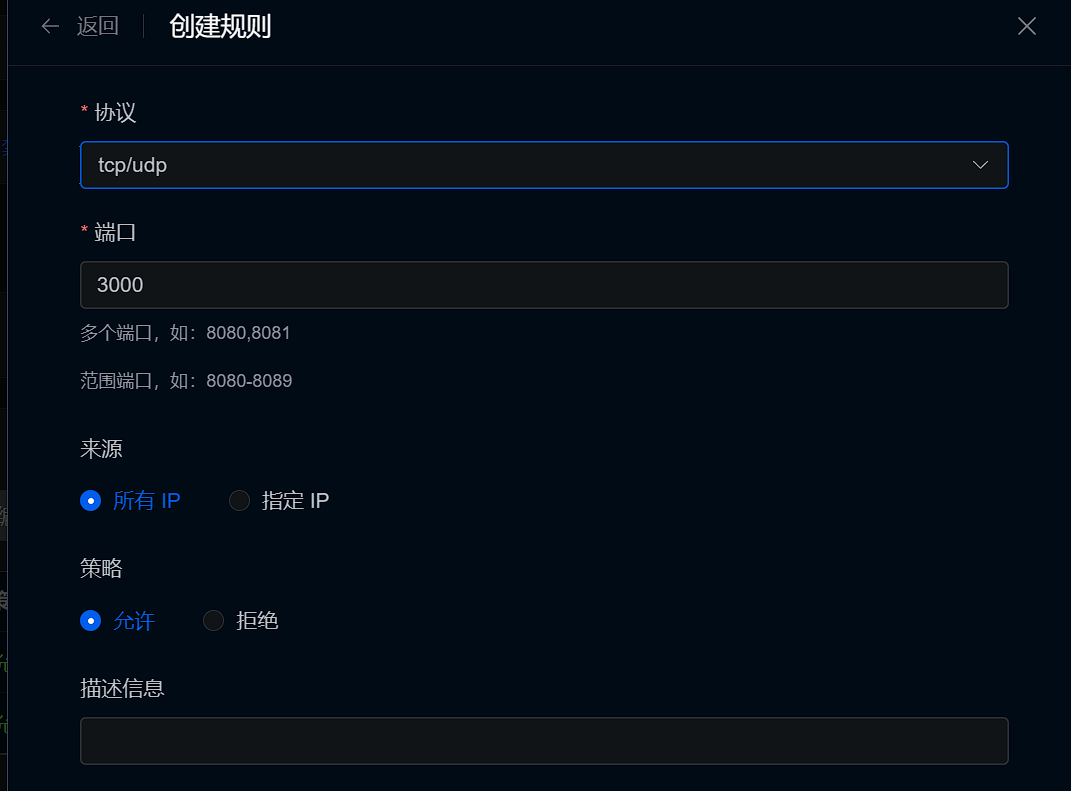

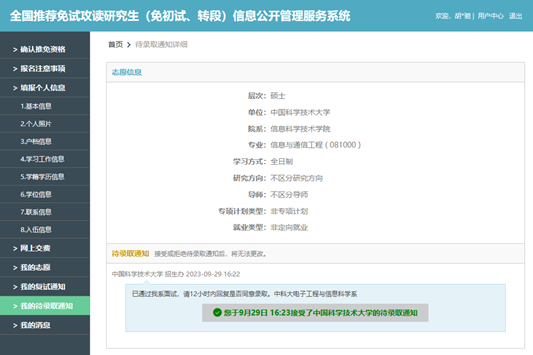
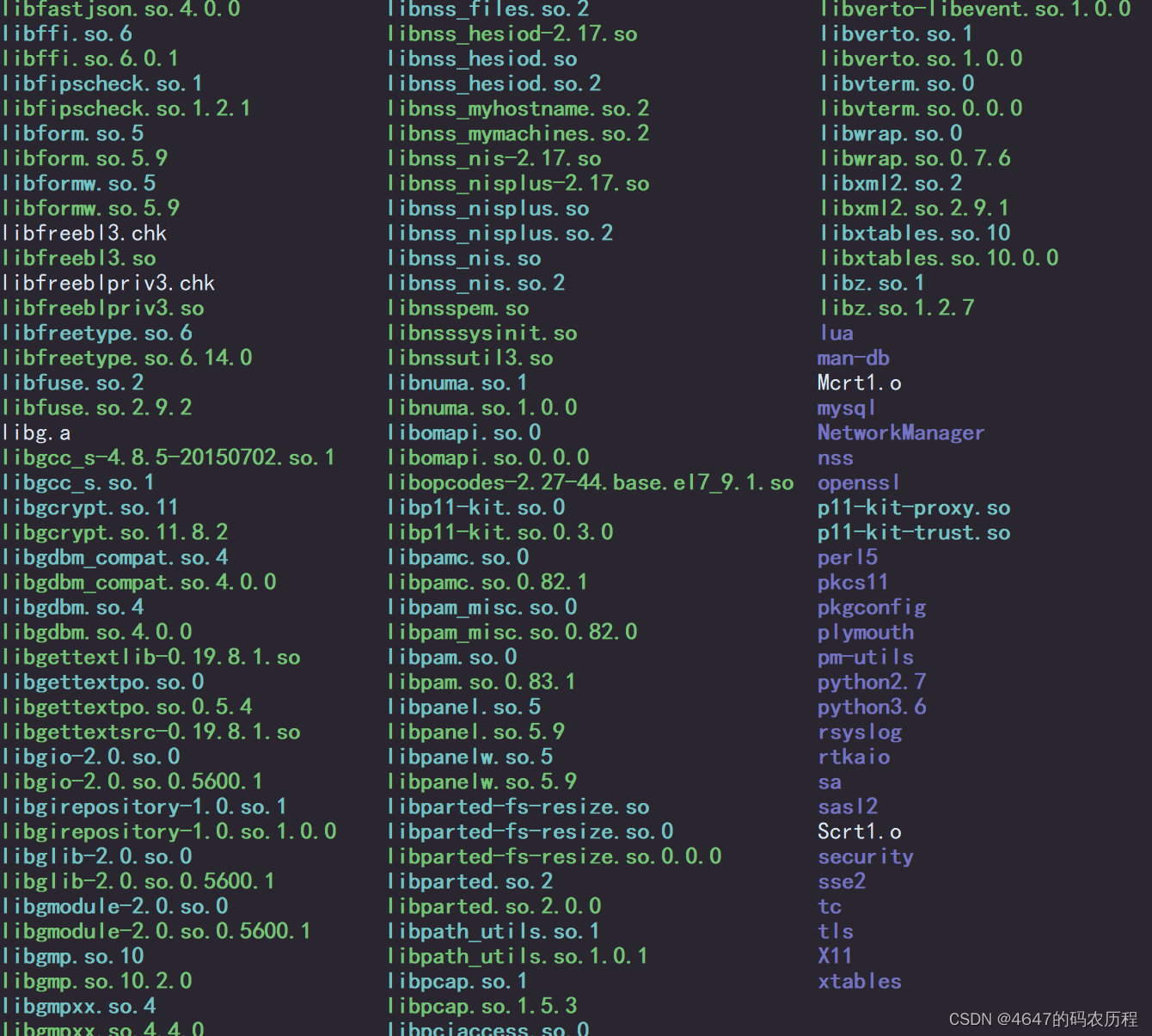



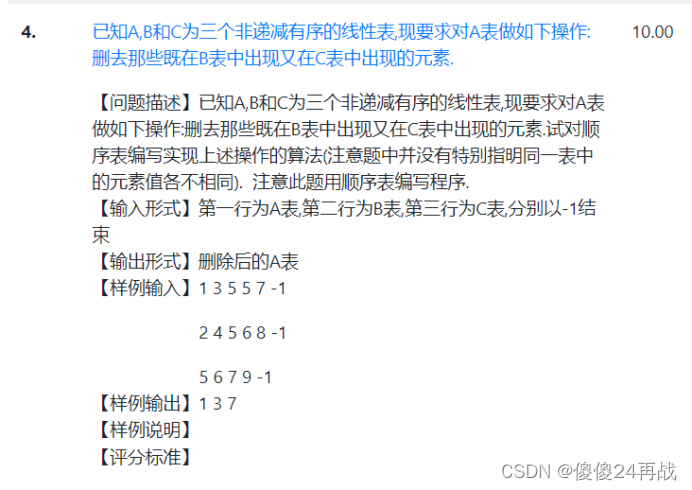
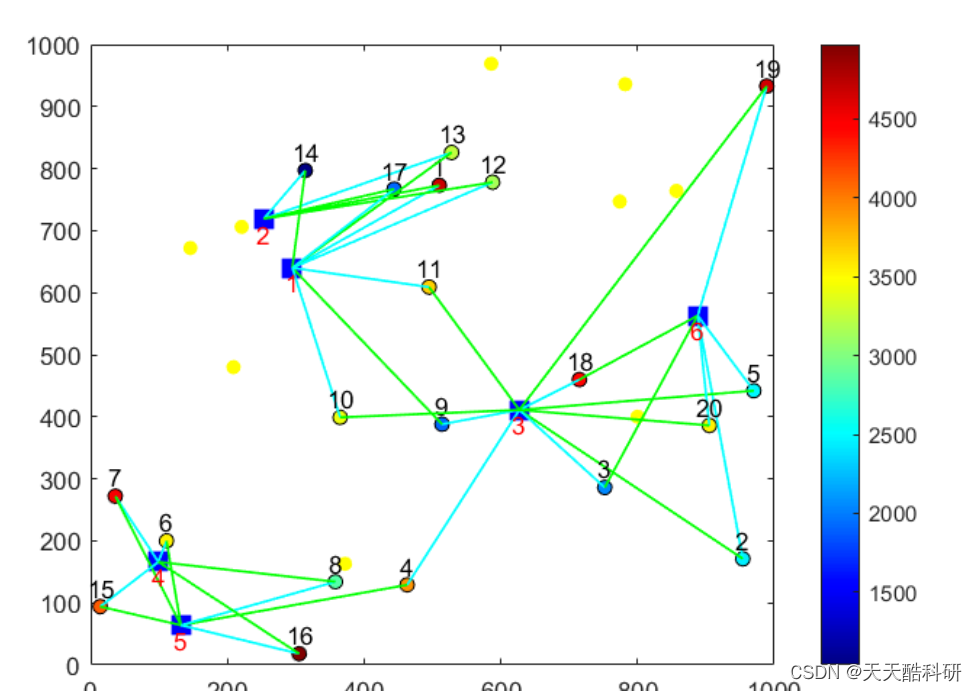
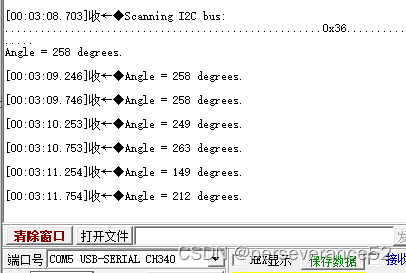


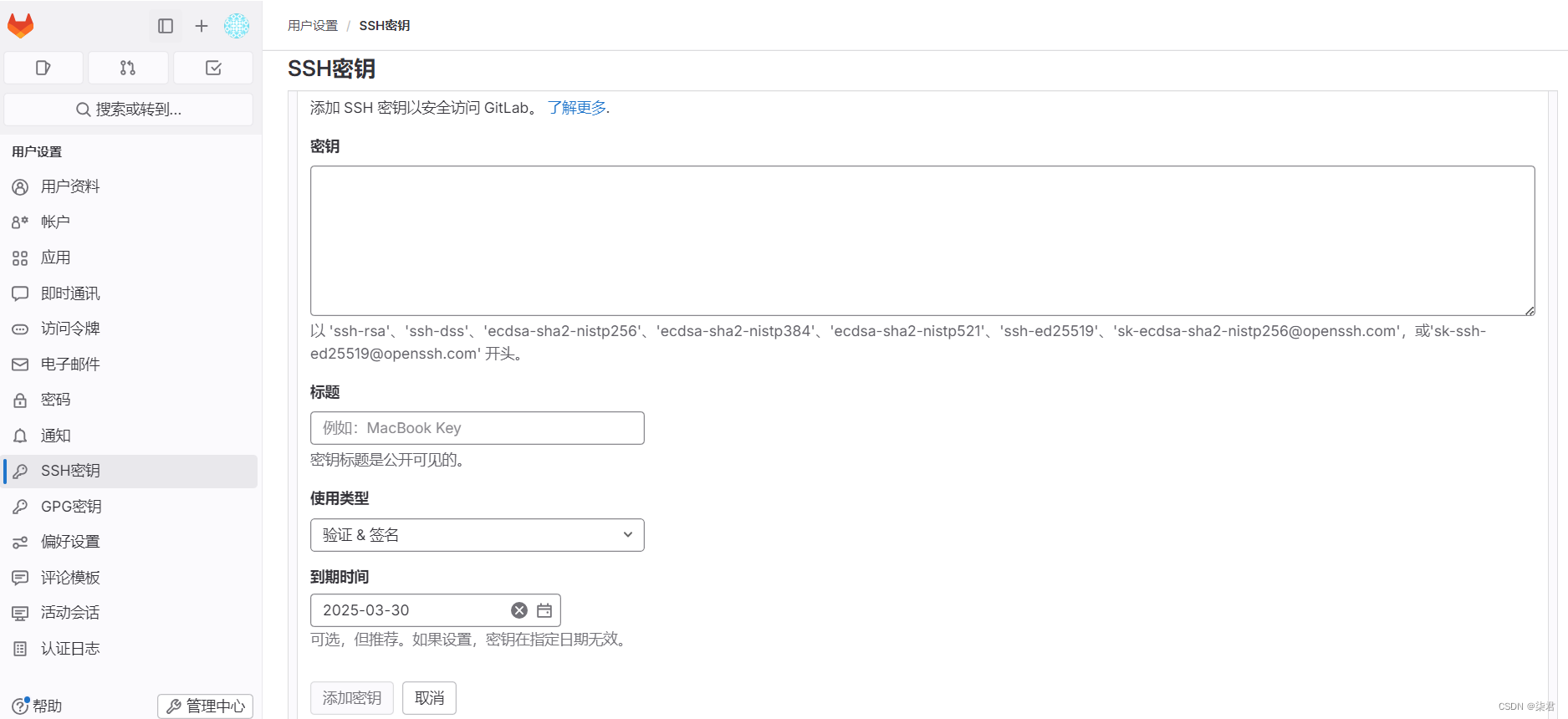
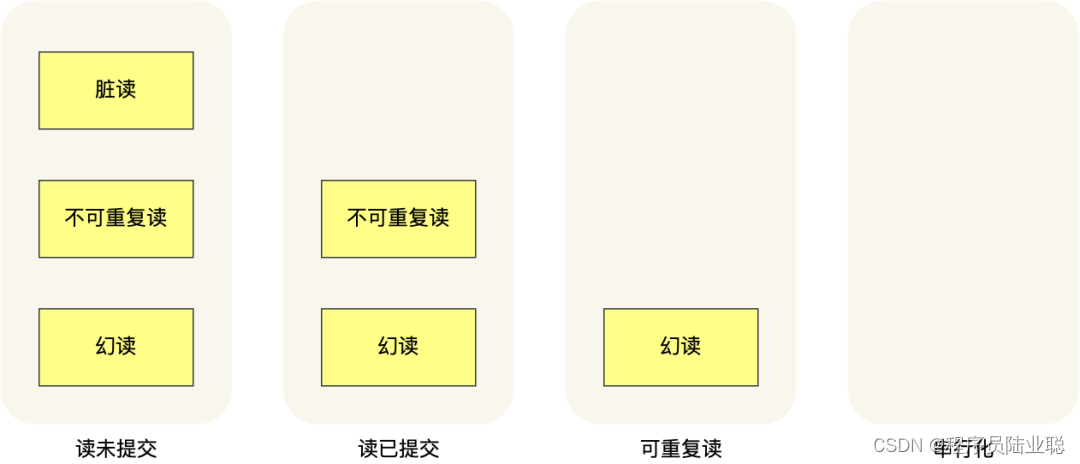
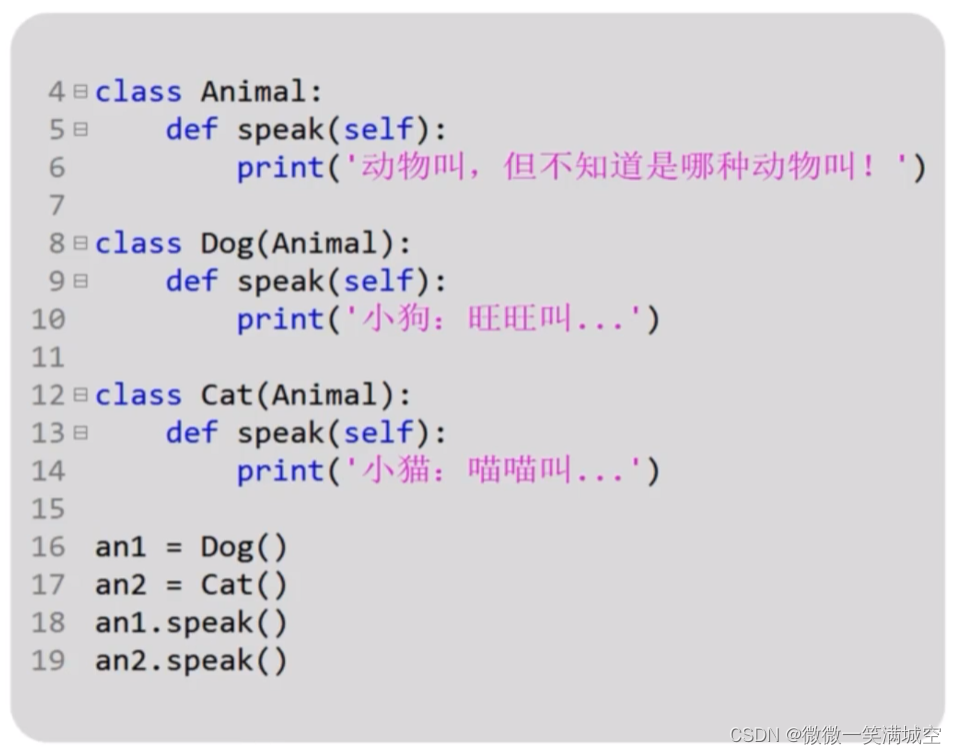
![数据结构03:栈、队列和数组 栈习题01[C++]](https://img-blog.csdnimg.cn/direct/214b15377d0445c4a2a19f85dd17430a.png)
